#August2017Sales
Detroit's Passenger Car Sales Are Falling Way Faster Than the Overall U.S. Auto Industry's
Across the U.S. auto industry, there are a number of auto brands that are actually selling more passenger cars in 2017 than in 2016: Jaguar, Lincoln, Infiniti, Subaru, Volkswagen.
Some specific models, many with all-wheel-drive availability like the Audi A5, Subaru Impreza, and Volkswagen Golf, are enjoying far greater sales success this year than last.
But you know the story. Generally speaking, Americans are buying far fewer cars now than they used to. From more than 50 percent just five years ago, passenger car market share is down to 37 percent. Nowhere is this more obvious than at traditional domestic manufacturers, the Detroit Three.
Primed to End the Toyota Camry's 15-Year Run, Honda Does Not Mess With 2018 Civic's Recipe
George W. Bush was finishing his second year as president of the United States when Toyota reported 434,145 Camry sales in calendar year 2002. No other passenger car generated more U.S. volume that year.
Or the next year. Or the next. Or the one after that. In fact, the Toyota Camry’s reign as America’s best-selling car continued for a decade and a half, stretching from 2002 through 2016.
Unless the launch of the all-new 2018 Toyota Camry results in a superior final third of 2017, however, Toyota’s tenure atop the leaderboard will end this year. Ahead of the Camry by 1,153 sales through the first eight months of 2017 is the Honda Civic.
With 2018 Civics arriving in Honda showrooms on October 3, 2017, Honda is determined to leave well enough alone. The recipe is unchanged. Honda will not mess with success.
The Infiniti QX50 Goes on Hiatus While Infiniti Kills Off the QX60 Hybrid
As Infiniti prepares to launch the replacement for the Infiniti QX50 next year, quite likely fitted with a unique new turbocharged engine with continuously altered cylinder compression ratios, the first-generation Infiniti QX50 takes a breather for the 2018 model year.
It may not be a well-deserved break — the QX50, formerly known as the EX35 and EX37, accomplished little for the Infiniti brand in America — but it’s a long overdue pause on Infiniti’s compact crossover.
It’s an odd duck, the QX50. Essentially a fast but outdated wagon, frequently sold in rear-wheel-drive form, the QX50 is still widely available prior to its relaunch for MY2019. The Infiniti QX60 Hybrid, on the other hand, is was the fuel-efficient version of Infiniti’s most popular product. At the end of the 2017 model year, the QX60 Hybrid is dead, Motor Authority reports.
What's the Volvo XC40 Getting Into? America's Subcompact Luxury Crossover Segment Is Tiny But Growing Fast
Of the 1.4 million new vehicles sold in the United States of America each month, premium auto brands account for slightly more than one out of every ten new vehicle acquisitions.
More than 55 percent of the vehicles now sold by premium auto brands in America are utility vehicles. Of the nearly 100,000 luxury SUVs/crossovers sold in America each month, 7 percent are subcompacts, vehicles positioned below the compact BMW X3, Mercedes-Benz GLC, Audi Q5, and a variety others.
It’s a sliver of a slice of a chunk of a pie. But that sliver is growing far faster than the overall U.S. auto market, far faster than the U.S. luxury vehicle market, and far faster than the U.S. luxury SUV/crossover market.
Into that four-vehicle premium subcompact crossover segment now jumps the Volvo XC40, timed to roughly coincide with the arrival of the Jaguar E-Pace. It’s a segment that, to date, no automaker has yet found a way to dominate.
Remember How Silly You Thought It Was When Lexus Predicted 400 LC Sales Per Month in America?
Lexus has high hopes for the LC, we told you in March. Not yet on sale at that point, Lexus was entirely transparent about the company’s belief that it could sell 400 copies of the LC500 and hybridized LC500h every month in America.
“That’s a big number,” I wrote six months ago, expressing a measure of doubt. But Lexus was insistent, based on “tremendous response to the LF-LC show car” from 2012, a successful carryover to production of concept car design, and “positive feedback in customer clinics.”
Doubt was expressed by most commenters, as well. “Good luck with that,” Master Baiter told Lexus. “Lexus, you need help,” said thats one fast cat. “Setting a goal like this is just setting Lexus up for the unnecessary perception of failure,” dal20402 wrote. “Dumb move.” badhobz said, “I don’t think it’ll do that well.”
It’s been half a year. It’s time for the Lexus LC to stand up and be counted.
These 16 Cars Are Bucking America's Anti-Car Trend in 2017
Through the first eight months of 2017, consumers across America have acquired 12 percent fewer new passenger cars than during the first eight months of 2016.
That’s a drop of 565,000 sales, a rate of decline that stands in stark contrast to the U.S. auto industry’s 4-percent year-over-year light truck improvement. Cars now account for just 37 percent of all auto sales, down from more than 50 percent as recently as 2012. But it’s not all doom and gloom. Some auto brands are selling more cars this year than last, and a wide variety of cars are accelerating their sales pace. Subaru, for example, has already sold 17,981 more Imprezas in 2017 than in the same period of 2016.
So we’ve compiled a list of every passenger car that’s making meaningful headway in America’s anti-car market — the cars that are selling more and more often even as many of their competitors suffer under the weight of a pro-F150, pro-RAV4, pro-Escalade ESV wave.
The list is not very long.
Midsize Sedan Deathwatch #15: Toyota Camry Proves to Be a Killer In August 2017
The launch of the all-new 2018 Toyota Camry began in July 2017 and delivered a big boost to America’s best-selling midsize car in August 2017.
As its competitors combined for a 12-percent loss valued at nearly 16,000 fewer sales than in August 2016, Toyota Camry sales jumped 13 percent, a gain of 4,187 sales. That figure includes 6,805 new-gen Camrys imported from Japan, where the Camry’s home market factory is being relied upon while Toyota’s Georgetown, Kentucky, assembly plant gathers steam for the entirely different Toyota New Global Architecture.
With falling sales across much of the category and rising volume at the top seller, Toyota got exactly what it called for in August 2017: a huge market share increase. But did the Camry provide the rumored boost to the segment overall? Quite clearly no, not yet.
Nearly Half of the Vehicles Sold by Porsche in August Weren't SUVs
Porsche revealed a new, third-generation Cayenne on a new platform late last month, but the U.S. arrival of the third version of Porsche’s original SUV won’t take place until the second half of 2018.
While the new Cayenne will be sold in some markets as a MY2018 vehicle, the 2018 Cayenne on this side of the Atlantic is the outgoing Cayenne. Yes, that Cayenne, the Cayenne that’s suffering from a sharp sales decline.
In August 2017, the Cayenne’s gradual and not entirely unpredictable old-age decline was matched to a sudden downward shift from its smaller sibling, as well. Macan sales plunged 29 percent last month. Cayenne volume was down 28 percent. Jointly, the duo lost 1,003 sales, year-over-year.
You know what that means. The overwhelming majority, the lion’s share, most, nearly half, more than a third of the vehicles sold in Porsche’s U.S. showrooms in August 2017 were sports cars. Yes, Porsche still builds sports cars, rather decent ones, in fact. And in August, Porsche’s sports car sales were very healthy indeed.
Why Did General Motors Report Such a Significant August 2017 Sales Gain as the Industry Slowdown Continued?
Crossovers.
New crossovers.
New crossovers in the biggest crossover segments.
General Motors reported a 7-percent year-over-year U.S. sales improvement in August 2017 — in stark contrast to GM’s declines in four preceding months — as the U.S. auto industry reported its eighth consecutive sales decline.
Don’t thank GM’s cars, sales of which tumbled by more than a tenth. Pickup-truck sales edged up only slightly, rising less than 3 percent compared with August 2016. But crossovers — especially newly launched crossovers, especially newly launched crossovers in America’s largest utility vehicle segments — produced massive U.S. sales improvements for GM in August 2017.
How massive? Apart from the Chevrolet Equinox, Chevrolet Traverse, GMC Terrain, and GMC Acadia, General Motors’ U.S. sales were down 2 percent last month.
Seemingly Every Automotive Headline Includes Electric This or That, but What's the State of Electric Vehicle Market Share in America?
You can forget the GM EV1 and the Toyota RAV4 EV. The car that truly attempted to bring electric cars into the mainstream was the 2011 Nissan Leaf.
It didn’t. U.S. Leaf sales, never reaching any great heights, plunged after its fourth full model year, falling by more than half between 2014 and 2016.
There’s a thoroughly updated second-gen Nissan Leaf on its way, destined to hit U.S. dealers early in 2018. But during the first-gen Leaf’s tenure, the Nissan was joined by a broad array of electric cars, from a handful of Teslas to the Chevrolet Bolt, Volkswagen e-Golf, Kia Soul EV, BMW i3, and Hyundai Ioniq, and all of these cars together have combined to quintuple U.S. electric vehicle market share over the last half-decade.
Only 0.1 percent of the new vehicles sold in America in 2012 were pure EVs. That figure has risen, very slowly, to 0.5 percent through the first eight months of 2017 while the number of available nameplates has more than doubled.
Perspective? Ford grew its F-Series’ share of the overall U.S. new vehicle market from 4.5 percent to 5.1 percent during the same period.
By the Slimmest of Margins, Cadillac's U.S. Operations Reclaim No.1 Position in Global Cadillac Sales Race
Cadillac, with market-specific cars and a rapidly expanding dealer network, is increasingly a China-reliant GM luxury brand.
In four consecutive months, from April 2017 through July 2017, GM’s Cadillac division sold more new vehicles in China than in its U.S. home market. Indeed, so far this year, 48 percent of the Cadillacs sold around the world were sold in China. Thank a massive 67-percent year-over-year sales gain, stirred up by very healthy Chinese demand for the XT5.
But in August, for the first time since March, Cadillac’s U.S. dealer network reasserted its collective claim as the rightful nation for Cadillac sales success. That’s correct: Cadillac sold more vehicles in the United States in August 2017 than in China.
Albeit not many more.
Stop the Presses: BMW Car Sales Rise, SAV Sales Fall in August
BMW’s North American CEO, Bernhard Kuhnt, blames inventory issues for the brand’s sharp utility vehicle sales decline in August 2017.
BMW reported only 8,847 utility vehicle sales in August, a harsh 21-percent year-over-year drop for the five-model lineup. Sales of Spartanburg, South Carolina-built X3s, X4s, X5s, and X6s plunged 30 percent as BMW was fortunately boosted by — strange as it may sound — elevated passenger-car sales.
Has the tide turned? Is America’s BMW buyer forsaking his X3 for a 330i; her X5 for an M550i?
Don’t believe it for a second.
Canadian Auto Sales Would Have to Plummet in Final Third of 2017 for This to Not Be the Industry's Best Year Ever
Canadian auto sales climbed to an all-time record high in 2013, jumping past the 1.7-million mark for the first time since 2002. The industry bettered that total in 2014, topped 2014’s total in 2015, and set a new record in 2016.
While U.S. auto sales continue to fall, sliding 2 percent in August and 3 percent through the first two-thirds of 2017, Canadian auto sales in August 2017 improved for a fourth consecutive month and the seventh month so far this year. Moreover, the improvements have been anything but modest. An 11-percent uptick in May was followed up by a 6-percent June increase, a 5-percent July increase, and a 7-percent August rise.
In fact, so strong are Canadian auto sales through the first two-thirds of 2017 that disaster would need to strike in the final four months of the year in order for 2017 not to be the best year ever for the Canadian auto industry.
Disaster appears unlikely.
As U.S. Auto Industry Declines Again, Subaru Reports All-time Record Sales in August 2017
Subaru’s eight-month-old U.S. monthly sales record of 63,177 units, reported in December 2016, fell by the wayside as Subaru of America posted its 69th consecutive year-over-year sales increase in August 2017.
Subaru sales last month jumped 5 percent over August 2016 to 63,215 units, breaking the brand’s all-time record by a scant 38 units.
Why is Subaru’s August growth and record achievement so important? There are four key reasons.
FCA Canada Often Reports Zero Fiat 500L Sales, Stands by Fiat 500L for the Foreseeable Future
Fiat Chrysler Automobiles did not sell any Fiat 500Ls in Canada in August.
Hyperbole has gotten the best of modern society. You might say, “Those chips have no taste,” when asking your grocery-shopping spouse to stop buying those Garden Veggie Straws you so detest. But there is some taste; just not much. (Recommended: the rosemary olive oil flavor.)
“Alex Ovechkin doesn’t score goals any more,” your Capitals-loving son says. No, Ovechkin just doesn’t score as many goals as he used to.
Politicians never work together. There’s no sea ice in the Arctic. Subcompact crossovers always suck.
That’s the sort of rhetoric that minimizes the value of truth when truth is presented in an equally straightforward fashion. But in all seriousness, FCA Canada truly did not sell a single Fiat 500L in August 2017.
In fact, with alarming frequency, FCA Canada’s sales reports don’t include any Fiat 500L sales. But FCA Canada is sticking to its guns, unrelenting in the face of a horrifying popularity dearth, immutable when challenged by a Fiat lineup that needs an overhaul. FCA Canada confirmed as such to TTAC this morning: there will be a 2018 Fiat 500L.






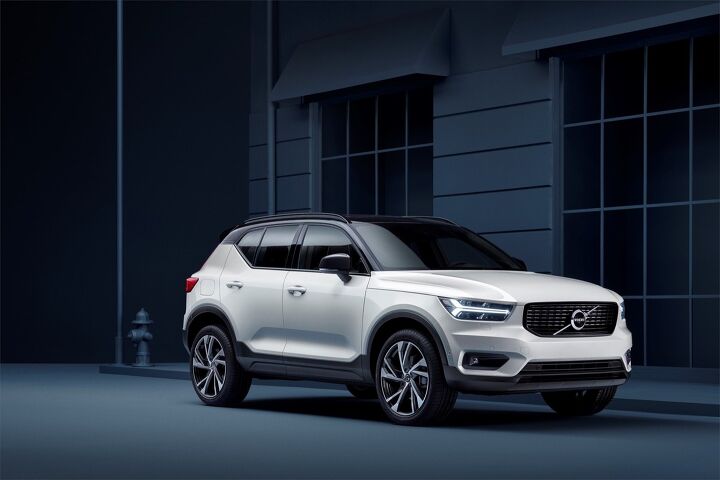

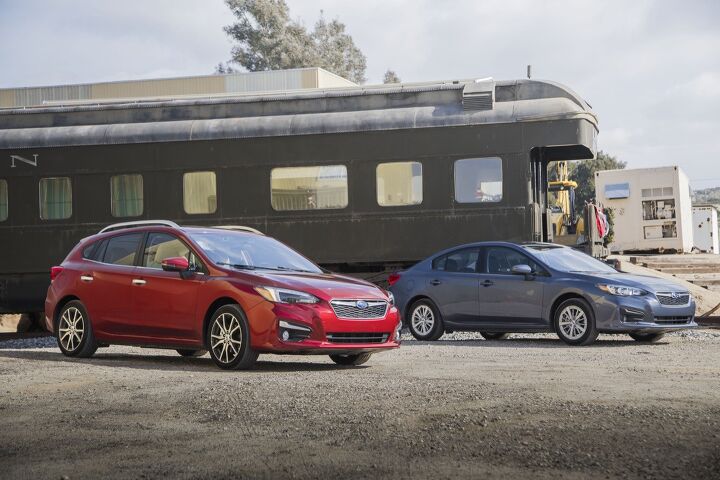

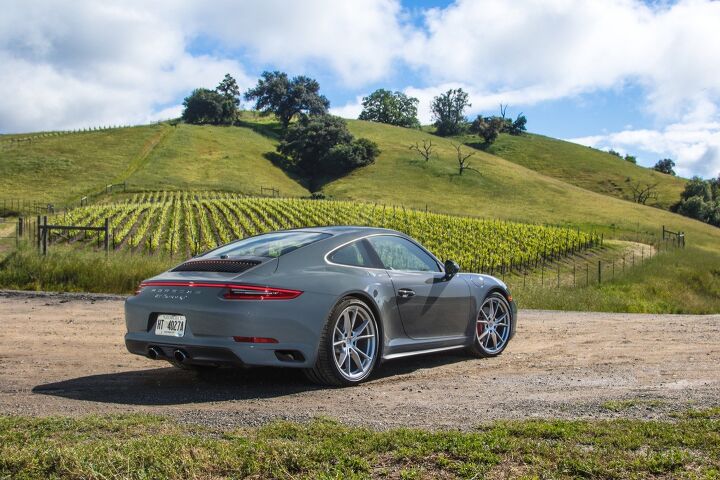
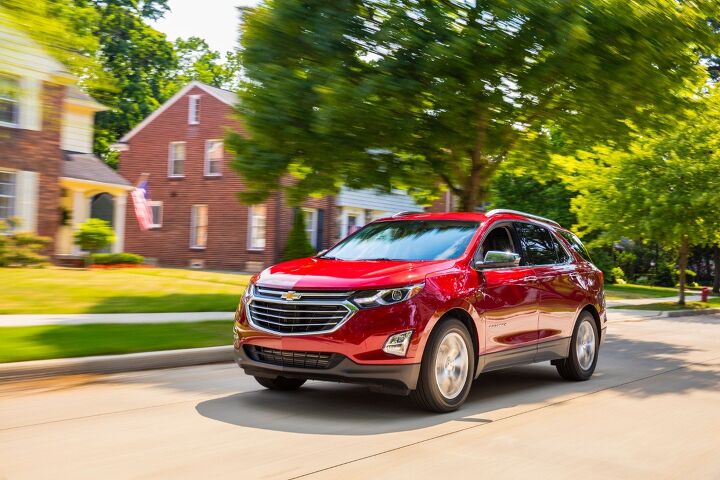


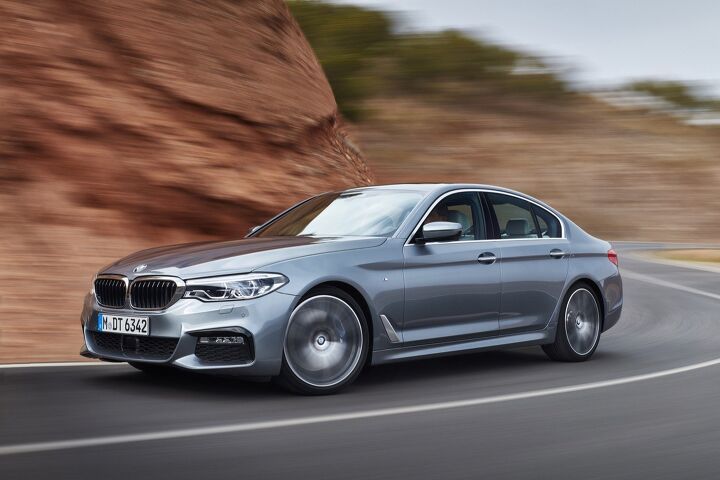

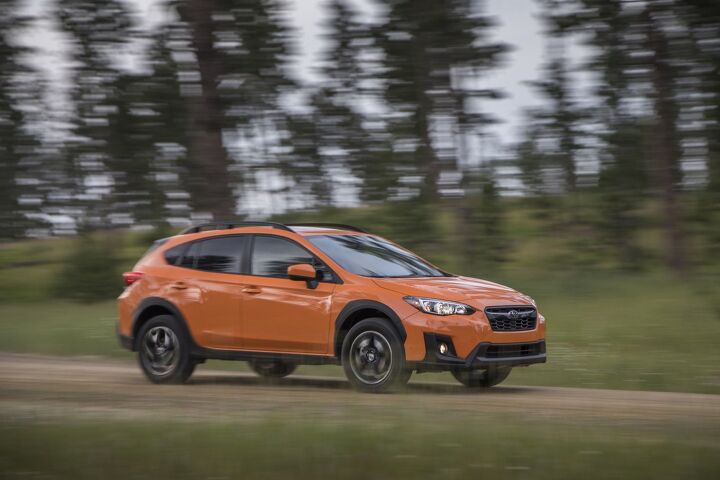
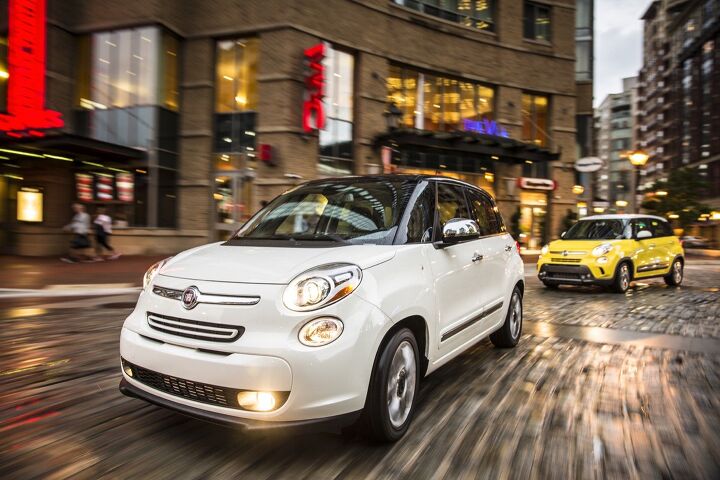












Recent Comments